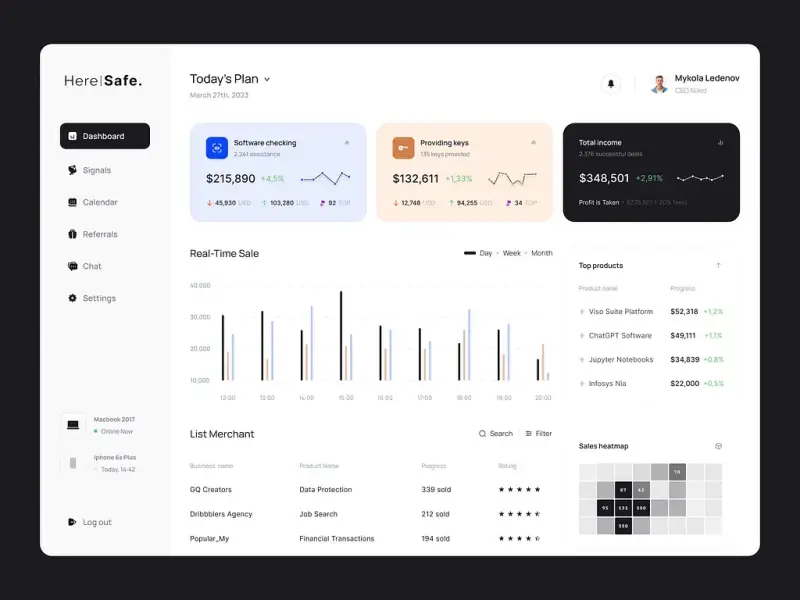Onshore vs Offshore: Choosing the Best Model for Your Project
- David Ho
- March 17, 2025
- Knowledge, Best practices
- 0 Comments
Choosing the right development model can feel like a puzzle. Understanding the difference between onshore and offshore teams is crucial. Onshore and offshore teams each have their strengths—onshore teams offer smoother communication, shared work hours, and fewer cultural barriers, while offshore teams open the door to lower costs and a vast pool of skilled developers. Both have their strengths, but neither is perfect. Onshore development often comes with a higher price tag. Offshore development can mean time zone gaps, language barriers, and quality concerns.
Some businesses thrive with local teams, valuing real-time collaboration and direct oversight. Others embrace offshore talent, willing to navigate the challenges for the sake of flexibility and cost savings. But what is the difference between offshore vs onshore? The key is to assess your project’s needs and determine which model best supports your goals. It’s a trade-off. The key is knowing what matters most. A project that demands constant back-and-forth might struggle with offshore delays. A company looking for specialized skills might find the perfect match halfway across the world.
There’s no universal right answer. The best choice depends on priorities, budget, and workflow. A development process should feel natural, efficient, and built for success—no matter where the team is.
I. What is the onshore outsourcing model?
The onshore outsourcing model (or onsite delivery model) refers to software outsourcing companies or third-party vendors that provide employees to customers within the same country. This approach helps businesses maintain close collaboration while benefiting from external expertise. Both the supplier and the customer are in the same country.
The supplier’s onshore vs. offshore development team directly coordinates and works with the customer’s team to delegate tasks. The supplier’s onsite team is usually located in the customer’s office. But sometimes, the outside group is primarily located in the supplier’s office, and most of their work with the customer is online.
| Advantages of onshore/onsite | Disadvantages of onshore/onsite |
|
Onshore outsourcing can work if your ultimate goal is to add a continuously expanding team with expertise not currently available within the company. An inbound outsourcing partner is also beneficial if you prefer a partner in your time zones and want to work in the same jurisdiction. Communication is often much easier and more streamlined when your outsourcing partner is geographically close. The chances of visits or staffing on your site are higher than with a local supplier. This type of development model is perfectly suited for short-term software development projects. Customers choose the onshore team mainly for redesign projects with repetitive work scopes. The other case is when the client has unclear requirements about the project. |
Outsourcing costs are mainly related to the local economic environment of the supplier. While local suppliers have certain other advantages, their prices are generally more than double or even more than those of a foreign supplier. Issues such as cultural or language barriers are less noticeable when choosing an onsite outsourcing company. However, miscommunication is still possible due to corporate culture, technology factors, or business processes with an onshore team. |
Have a Project Idea in Mind?
Get in touch with experts for a free consultation. We’ll help you decide on next steps, explain how the development process is organized, and provide you with a free project estimate.
II. What is the offshore outsourcing model?
The offshore and onshore difference is often highlighted in the software development industry. The offshore software development model (or offsite) is a popular distribution model based on the supplier’s location in another country. The model of overseas delivery is also known as outsourcing – the customer orders software development from developers in another country. The client does not have direct interaction with the supplier. However, customers can communicate with team members via message, video call, phone, etc. This software development is suitable for well-structured and planned projects with clear SRS documentation. Offshore software development is quite common these days.
| Advantages of offshoring | Disadvantages of offshoring |
|
Clients often hire an offshore team when there is a potential long-term project or custom software development. The main advantage of offshore outsourcing IT projects is cost savings. At least indirectly, choosing one or more offshore software companies in some potential markets like Vietnam increases your presence in a new foreign market. In addition, reputable and experienced software outsourcing service providers like TECHVIFY are always committed to ensuring the output quality of the project with additional benefits such as 24/7 service support, which means the time difference does not bind you. |
It would help to consider several barriers before hiring an offshore development provider. It can be not easy to employ an overseas outsourcing team in a country that speaks a different language and whose customs do not suit you. |
Learn More On:
III. Difference Between Onshore vs Offshore Software Development
Understanding onshore vs. offshore software development is key to choosing the right approach for your business. Onshore development happens within the same country as a company’s headquarters or primary operations, ensuring smoother communication. Offshore development, on the other hand, takes place in a foreign country, often chosen for its lower labor and operating costs.
Each approach has its own strengths and challenges. Onshore development offers seamless communication and closer collaboration, while offshore development provides access to a broader talent pool at a more affordable rate. Understanding these differences helps in making the right choice for your project.
Given below are the notable differences between onshore and offshore development based on various parameters:
| Aspect | Onshore Development | Offshore Development |
|---|---|---|
| Location | A team within the same country. | Setting up a team in a different country. |
| Proximity | Easier access to the development team due to close proximity. | Geographical distance may cause communication delays. |
| Cultural Alignment | Shared language, norms, and business practices for smooth collaboration. | Cultural differences and varied work ethics may impact workflow. |
| Communication | Encourages in-person meetings for better understanding. | Relies on digital tools like video calls, emails, and chats. |
| Talent Pool | Limited to local workforce, restricting specialized skills. | Wider global talent pool with access to niche expertise. |
| Language Barrier | Minimal language challenges due to local communication. | May require proficiency support and clear communication strategies. |
| Time Zone Impact | Easier scheduling with no time zone conflicts. | Requires careful planning to manage time differences. |
| Work Cycle | Aligns with local business hours for convenient coordination. | Operates in a 24-hour cycle, potentially speeding up development. |
Choosing between onshore and offshore development requires balancing priorities. Onshore teams provide real-time communication and a sense of direct control, making collaboration smoother. However, this convenience often comes at a higher cost.
Offshore development, on the other hand, opens the door to international expertise and cost-effective solutions. Affordable rates and a broader talent pool can be attractive, but handling time zone differences and cultural nuances requires extra effort.
Ultimately, the right choice depends on what matters most for your project—whether it’s seamless coordination or cost savings, immediate accessibility or scalability.
IV. How to Choose Between Onshore and Offshore Services
Finding the right approach takes more than a quick decision. Each option has its strengths, and the best choice depends on your priorities. Cost, collaboration, flexibility, and quality all play a role. Here’s how to determine what fits your needs.
Step 1: Evaluate Your Budget
Start with the numbers. If keeping costs low is the priority, onshore and offshore outsourcing both offer unique advantages. Offshore services often provide skilled professionals at a lower rate, while onshore services ensure better communication and alignment with local business practices. A broader talent pool. More flexibility to scale. But lower costs can come with trade-offs. Onshore development, while more expensive, offers easier management, real-time collaboration, and fewer communication challenges. Investing more upfront can sometimes prevent costly delays and misunderstandings later.
Step 2: Consider Your Project’s Complexity and Requirements
Some projects need constant adjustments, brainstorming sessions, and close teamwork. If that sounds like yours, onshore teams provide a smoother experience. Working in the same time zone. Clearer communication. Fewer delays. But if the project has a well-defined structure with minimal need for ongoing input, offshore development can be just as effective at a lower cost. The more complex the project, the more important seamless coordination becomes.
Step 3: Assess Quality Control Needs
Frequent testing, detailed oversight, and strict quality standards can make onshore development the easier option. Keeping everything close allows for quick feedback and adjustments. Offshore teams can still meet high standards, but it takes extra effort to set up processes that ensure consistency. If the project is well-documented and structured, offshore teams can deliver strong results, but without clear guidelines, quality may vary.
Step 4: Review Legal and Regulatory Compliance
Some industries have strict security and legal requirements, especially in areas like finance and healthcare. Onshore development simplifies compliance because local teams already understand the regulations. Offshore development may require additional legal guidance and structured processes to meet the necessary standards. If the project involves handling sensitive data, ensuring compliance from the start can prevent complications later.
Learn More On:
Step 5: Analyze Time Zone Considerations
Time zones can work for or against a project. Offshore teams can keep progress moving around the clock, making development more continuous. But if real-time collaboration is essential, time differences can slow things down. Waiting hours for a response or struggling to align schedules can create bottlenecks. Onshore teams eliminate that issue, making it easier to communicate instantly and solve problems without delays.
Step 6: Think About Cultural Alignment and Communication Style
Every project requires teamwork, but some depend on deeper creative collaboration. If cultural alignment, intuitive understanding, and quick back-and-forth discussions are important, onshore teams provide an advantage. But for structured tasks with clear instructions, offshore teams can work just as effectively with the right communication tools and processes in place. Setting expectations early ensures smoother collaboration, no matter where the team is located.
Step 7: Long-Term Strategic Goals
Think beyond the immediate project. If the goal is to build a strong, long-term team that integrates closely with your company, onshore development makes that easier. But if flexibility matters, offshore services provide more room to scale up or down as needed. Expanding globally, taking on larger projects, or shifting priorities over time all become more manageable with an adaptable, remote team.
Conclusion
Deciding between onshore vs. offshore development isn’t just about cost—it’s about aligning your project with the right team, workflow, and long-term goals. Understanding the onshore vs. offshore meaning helps businesses make informed decisions based on communication needs, budget, and project complexity. Onshore development ensures seamless collaboration and quick communication, while offshore development provides access to a global talent pool with cost-effective solutions. Both have their advantages, and the right choice depends on what works best for your business.
Not sure which approach fits your project? Let TECHVIFY help. Our experts will analyze your needs and recommend a development strategy that maximizes efficiency, quality, and cost-effectiveness.
TECHVIFY – Global AI & Software Solution Company
From Startups to Industry Leaders: TECHVIFY prioritizes results, not just deliverables. Accelerate your time to market and see ROI early with high-performing teams, AI (including GenAI) Software Solutions, and ODC (Offshore Development Center) services.
- Email: [email protected]
- Phone: (+84)24.77762.666






